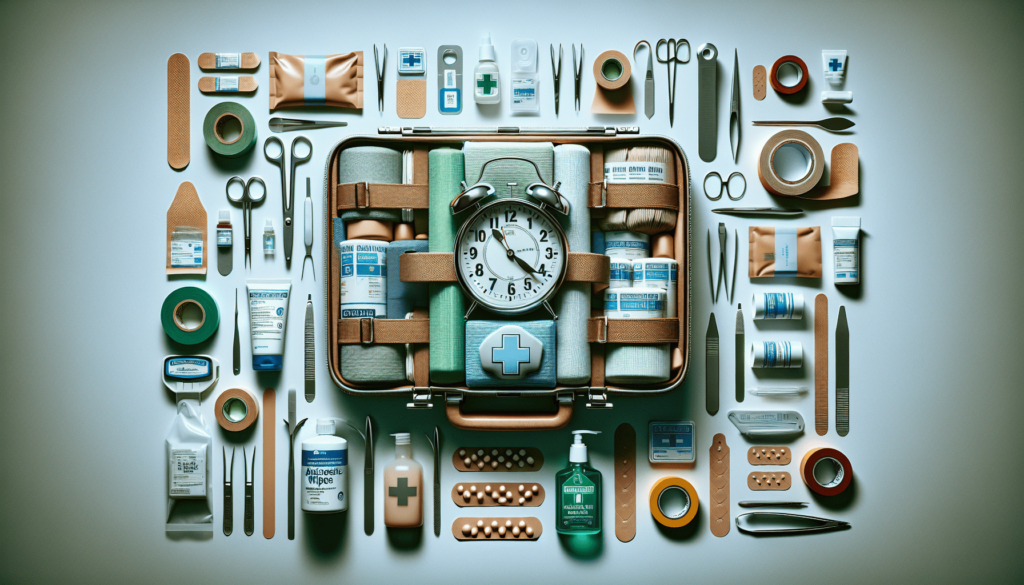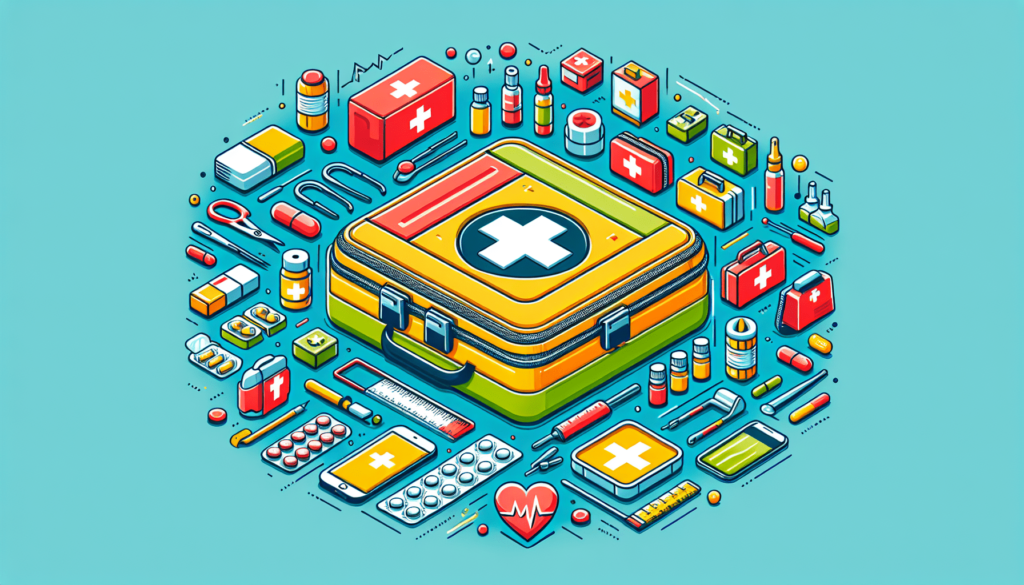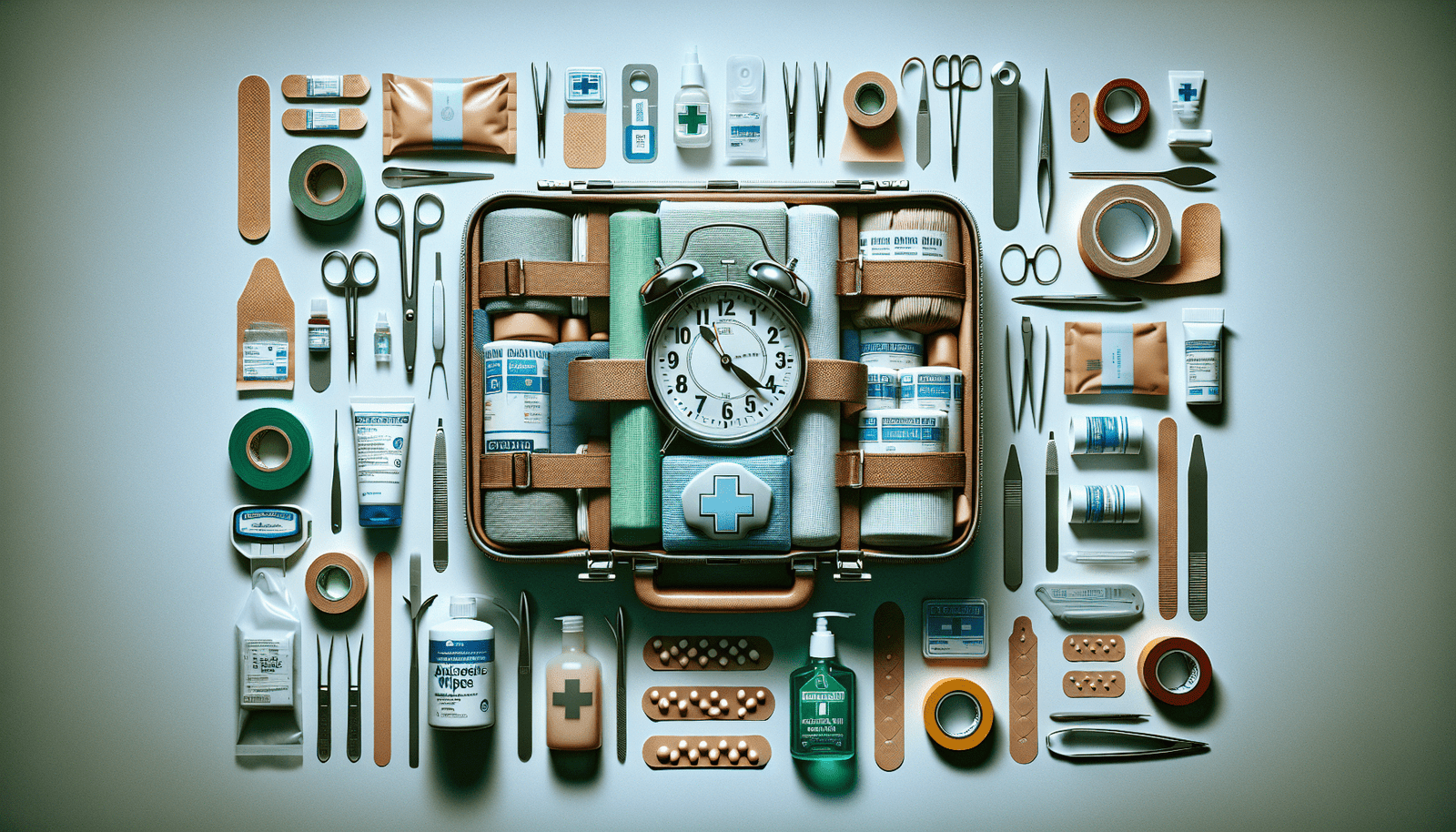Embark on a self-sufficient adventure and embrace the empowering world of off-grid living. Imagine a life where you can rely on yourself and your loved ones, equipped with valuable skills to navigate any unexpected situation. From building shelters to treating wound infections, you can gain the confidence and resourcefulness to tackle life’s challenges head-on. Start by exploring the essential elements of a first-aid kit and build your lifesaving kit in just 10 minutes. This journey is not about doomsday preparation; it’s about connecting with nature, embracing self-reliance, and discovering the empowering freedom that comes with knowing how to thrive, no matter what life throws your way. So, are you ready to embark on your own off-grid adventure?
Bandages and Dressings
Having a variety of bandages and dressings in your first-aid kit is essential for treating wounds and injuries. Adhesive bandages, available in assorted sizes, are perfect for minor cuts and scrapes. They provide protection and help prevent infections.
Sterile gauze pads are another must-have item. They can be used to cover larger wounds and control bleeding. Non-stick sterile pads are great for wounds that require frequent dressing changes, as they don’t adhere to the skin.
Elastic bandages are useful for providing support and compression to sprained or strained joints. They help reduce swelling and immobilize the injured area. Triangular bandages, on the other hand, have multiple uses including immobilizing fractures and making slings.
Wound Cleaning and Antiseptics
Before dressing a wound, it’s important to clean it properly to reduce the risk of infection. Antiseptic wipes are convenient for on-the-go wound cleaning. They sterilize the affected area and remove dirt and debris. Hydrogen peroxide and rubbing alcohol are also commonly used antiseptics that kill bacteria and prevent infection.
Applying antibiotic ointment to wounds helps speed up the healing process and prevents bacterial growth. It creates a protective barrier over the wound. Sterile saline solution is useful for irrigating wounds and removing any foreign objects.

Tools and Instruments
Certain tools and instruments are necessary for effectively treating injuries. Tweezers are handy for removing splinters, debris, or ticks from the skin. Scissors are essential for cutting dressings, tape, and clothing that may be obstructing a wound.
Safety pins can be used to secure bandages or make temporary slings. Disposable gloves are important for personal protection and to prevent cross-contamination. A thermometer is helpful for monitoring body temperature in case of fever or heat-related emergencies.
Emergency Medications
Including emergency medications in your first-aid kit can provide relief in various situations. Pain relievers such as acetaminophen or ibuprofen help reduce pain and discomfort. Antihistamines are essential for treating allergic reactions, while anti-diarrheal medication can be helpful in case of gastrointestinal issues.
Topical creams for insect bites and rashes provide soothing relief and help reduce itching. If you or a family member requires prescription medications, make sure to include them in your kit.

Emergency Equipment
Certain emergency equipment can be invaluable in critical situations. A CPR mask is essential for performing cardiopulmonary resuscitation (CPR) safely and effectively. An instant cold pack helps reduce swelling and provides relief for sprains or strains.
An emergency blanket is designed to retain body heat and keep the individual warm in case of hypothermia or shock. An emergency whistle can be used to attract attention and signal for help. Duct tape is versatile and can be used for various emergency purposes, such as securing dressings or making temporary repairs.
Miscellaneous Items
In addition to the essentials, there are a few miscellaneous items that can come in handy. Cotton balls can be used for applying ointments or cleaning wounds. Cotton swabs are useful for delicate cleaning tasks. Disposable face masks protect against airborne contaminants.
Having eyewash solution on hand is crucial in case of eye injuries or irritations. Medical tape is versatile and can be used to secure dressings or splints.
First-Aid Reference Materials
Having reference materials in your first-aid kit can be invaluable, especially in high-stress situations. A first-aid manual or guidebook provides step-by-step instructions for handling various medical emergencies. Make sure to include emergency contact information, including phone numbers for local emergency services.
If you have received first-aid and CPR certification, keep the certification cards in your kit. This serves as proof of your training and can be useful in emergency situations. It’s also important to have a list of emergency numbers, including poison control and your doctor’s contact information. Additionally, having a medical history form can help provide essential information to medical professionals in case of an emergency.
Personal Protection
Personal protection is crucial when providing first aid. Hand sanitizer should be used before and after administering care to prevent the spread of germs. Disposable gloves protect both the caregiver and the patient from potential contamination.
Masks are essential in situations where there is a risk of airborne contaminants or infectious diseases. Eye protection, such as safety glasses or goggles, shields the eyes from potential hazards. Gowns can be used to protect both the caregiver’s and patient’s clothing from contamination.
Specialized Equipment
Certain injuries may require specialized equipment for proper treatment. Splints are used to immobilize broken bones or injured joints, providing support and stability. A tourniquet can be used to control severe bleeding in extreme situations.
An AED (Automated External Defibrillator) is a device used to restore normal heart rhythm in case of sudden cardiac arrest. A SAM splint is a versatile splint that can be molded to various body parts. A pulse oximeter measures oxygen saturation levels in the blood and is essential for monitoring respiratory conditions.
Additional Supplies
A few additional supplies can be beneficial in specific situations. Medical shears are durable scissors designed for cutting clothing, bandages, or seatbelts. A CPR barrier mask provides a barrier between the rescuer and the person receiving CPR.
Sterile eyewash is crucial for quickly irrigating eye injuries to minimize potential damage. An instant hot pack provides heat therapy for injuries or muscle pain. A snake bite kit may be necessary in areas with venomous snakes to provide immediate treatment.
By ensuring your first-aid kit includes all the necessary items mentioned above, you’ll be well-prepared to handle a wide range of emergencies. Remember to periodically check and replenish your supplies to keep your kit up to date and ready for use. Being prepared and having the knowledge and resources to respond to unexpected situations is a crucial step towards ensuring the safety and well-being of yourself and your loved ones.

